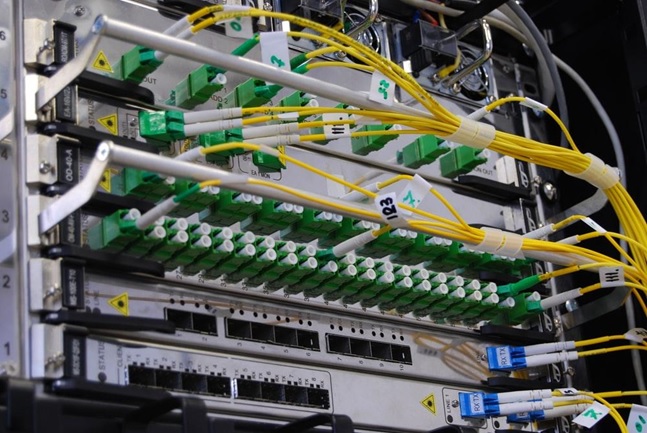

Telecom Security Threats: Actionable Solutions to Stay Protected
Security Threats Facing Telecoms: A Modern Dilemma
In the last decade, the telecom industry has been turned on its head—think of it as a roller‑coaster that keeps spinning faster and faster. Mobile phones, Wifi, streaming services, everything we do in the digital age hinges on these networks. As businesses, offices, and even our grocery‑lists lean on the telecom infrastructure, the stakes for keeping it secure have never been higher. Let’s dive into the main dangers that threaten these networks and explore how telecom giants are tackling them.
1. Malware & Ransomware – The Bad Guys in the Pack
- Ransomware attacks force companies to pay for access to their own data. The downside? Even if you pay, that “unlocked” data can still be corrupted or stolen.
- Advanced Persistent Threats (APTs) quietly infiltrate systems, staying hidden for months while siphoning data.
- Cybercriminals are becoming more creative with “zero‑day exploits” that catch vendors off guard.
2. Insider Threats – The Unexpected Saboteurs
- Intentionally or accidentally, employees can leak sensitive data by firing a mis‑typed email or plugging in a rogue USB.
- Staff with high‑level access can misuse credentials to slide into restricted zones.
- These incidents cost companies millions because they require expensive investigations and patching.
3. Distributed Denial‑of‑Service (DDoS) – Overwhelming the System
- Massive traffic surges can cripple services, forcing customers to get stuck on “service unavailable” pages.
- Modern DDoS attacks use botnets that consist of millions of infected devices.
- Telecoms have to breed dynamic defenses that can detect and filter malicious traffic without choking legitimate users.
4. Phishing & Social Engineering – Nipping at the Head
- Attackers impersonate senior technicians or “trusted vendors” to coax employees into giving away passwords or installing malware.
- Phishing emails can copy the look of official contracts or tickets and produce near‑perfect fakes.
- Consequences? Data breaches, expensive re‑authentication, and loss of customer trust.
5. Infrastructure Vulnerabilities – Old Tech vs. New Threats
- Legacy equipment often lacks security patches, making it an easy target.
- Key infrastructure such as cell towers or submarine cables can be physically tampered with or broken.
- Retrofitting modern security protocols into old gear demands meticulous planning and cost‑intensive upgrades.
6. Regulatory & Compliance Hazards – The Legal Minefield
- With GDPR, CCPA, and emerging telecom‑specific regulations, a single data mishap can trigger heavy fines.
- Certifying that every piece of hardware meets security standards can be a logistical nightmare.
- Companies silently fear that a breach could trigger a domino effect—losing not only customers but entire business licenses.
Putting a Life Jacket on the Network
Telecom companies are racing to stay ahead of these threats. The key ingredients include:
- Zero Trust Core Architecture—Treat every request as potentially hostile, even if it comes from inside the network.
- Continuous Monitoring and AI‑Driven Anomaly Detection—Spot unusual patterns before they become breaches.
- Investing in Cyber Insurance and updating incident response plans regularly.
- Proactive Employee Education—Turning the workforce into a frontline defense.
- Deploying Encryption Everywhere—Layering data protection from endpoints to core routers.
In short, the telecom sector is at a crossroads. On one side lies the promise of limitless connectivity; on the other, an ever‑growing threat landscape. By weaving together technology, people, and policy, telecom providers can safeguard the digital arteries that keep our world running—and keep that body ugly business drama on the sidelines.
Malicious Attacks
Why Telecom Networks Are the New Goldmine for Cyber Criminals
Picture this: a sleek fiber‑optic cable hugging the curves of a continent’s coastline, humming with data, while a thieving mastermind eyes its shiny metal sheath. That’s not a thriller movie – it’s happening right now.
Three Ways Bad Guys Attack
- Cable Stealing
Most telecom cables are wrapped in copper layers. Thieves can strip those out easily, and the copper is a hot commodity. Think of it like a shiny Twitter account that you can literally pick up and sell – except it’s for the flour‑high‑tech black market. The damage? Entire networks can crumble when the core is ripped away. - Deliberate Damaging
Telecom assets aren’t just on land; they float on oceans, orbit the earth, and rock the globe with satellites. Terrorists might use heavy anchors from ships or even deploy homemade explosives to chew away at those undersea arteries. The result? A world where video calls go haywire and emergency text alerts get lost in the void. - Signal Jammers
These guys prefer to play with radio frequencies. By flooding a spectrum with noise, they clog up satellite and mobile traffic. Picture a crowded karaoke bar where everyone’s trying to sing, but no one can actually hear the lead singer – that’s what a signal jammer does to your phone network.
Feeling the Heat? Here’s How to Put a Stop Flag
Companies that’re stuck in the trenches have a couple of survival tools:
- Strict Security Policies – If someone tampers with a cable, they shouldn’t just be caught; they should face real consequences. Think of it as the corporate equivalent of calling the police after a vandal sneaks into your office.
- Reinforced Hardware – Double‑layer steel jackets, tamper‑evident seals, and even GPS‑tracked cable reels can make it hard for a thief to pull out the copper and still leave a clean exit.
- Continuous Monitoring – Anomalies in traffic can hint at jamming or sabotage. Early warning systems keep the network intact and the data from going into a blackhole.
In short, the world is walking hand‑in‑hand with tech thieves, but by fortifying cables and tightening policies, we can push the bad guys back to the shadows. Keep your networks humming, keep your data safe, and remember: a secure line today beats a catastrophic outage tomorrow.
Non-deliberate Attacks
Unexpected Hazards in Telecom Operations
While malicious attacks grab the headlines, there are a whole bunch of non‑intentional threats that can turn a smooth telecom operation into a chaotic mess. Let’s take a quick detour into those accidental danger zones.
Computer System Malfunctions
- Software Fumbles – Outdated code or forgotten patches can make a system act like a drunk sailor, stumbling over critical tasks.
- Hardware Hangups – Legacy devices that haven’t seen a factory reset might develop a mind of their own, refusing to cooperate.
- Maintenance Neglect – Skipping routine checks is like leaving the door hang open; anyone (or anything) can stroll in and cause trouble.
- Spare Parts Shortage – Without a spare part pantry, even a tiny crack can snowball into a major outage.
Power Outages
Picture this: a power cut hits a bustling telecom hub with no backup. The result? A flickering ring of dead zones and frantic calls from customers wondering why the line’s as quiet as a library. Investing in uninterrupted power supplies isn’t just wise—it’s essential.
Cable Damage Accidents
Cables can get more tangled than a Sunday afternoon family photo. It isn’t just about vandalism—accidents happen:
- Installation blunders by shaky hands.
- Maintenance mishaps where someone’s tool swings a little too close.
- Cycling traffic that swaps good days for bad, lurching in and out along the corridor.
Bottom line: get a crew that takes precautions seriously and bring in a backup plan for power. That way, your network stays as steady as a rock—minus the rock‑solid mishaps.
Cyber Attacks
html
Telecom Data—and the Bad Guys Who Want It
At their core, telecom providers store heaps of personal data—think contact lists, chat logs, and location pings. That makes them a magnet for cybercriminals worldwide. As black‑hat hackers gear up with ever‑sophisticated tools, breaking into network layers feels as easy as popping a candy bar.
How Attacks Slip In
- Network Devices – Every router, switch, and base‑station can become a “doorway” for a sneaky attack. Hackers might slip through a seemingly harmless app and wreak havoc throughout the whole system.
- Man‑in‑The‑Middle Attacks – Picture two people chatting: an invisible third party steps in, snatches the conversation, tweaks it, and uses the tampered data for shady tricks.
- Legacy Software – Old protocols are like rusty lock‑picks for modern thieves. They’re ill‑prepared to fight off today’s multi‑layered assaults.
What Companies Can Do
To kick these cyber‑thugs to the curb, telecoms need to upgrade to cutting‑edge tech and enforce rock‑solid security protocols. Think of it as locking every door and installing smart surveillance.
The Bottom Line
The telecom sector faces constant security challenges. As hackers evolve, so must the industry—tightening every groove to keep the network humming safely.







